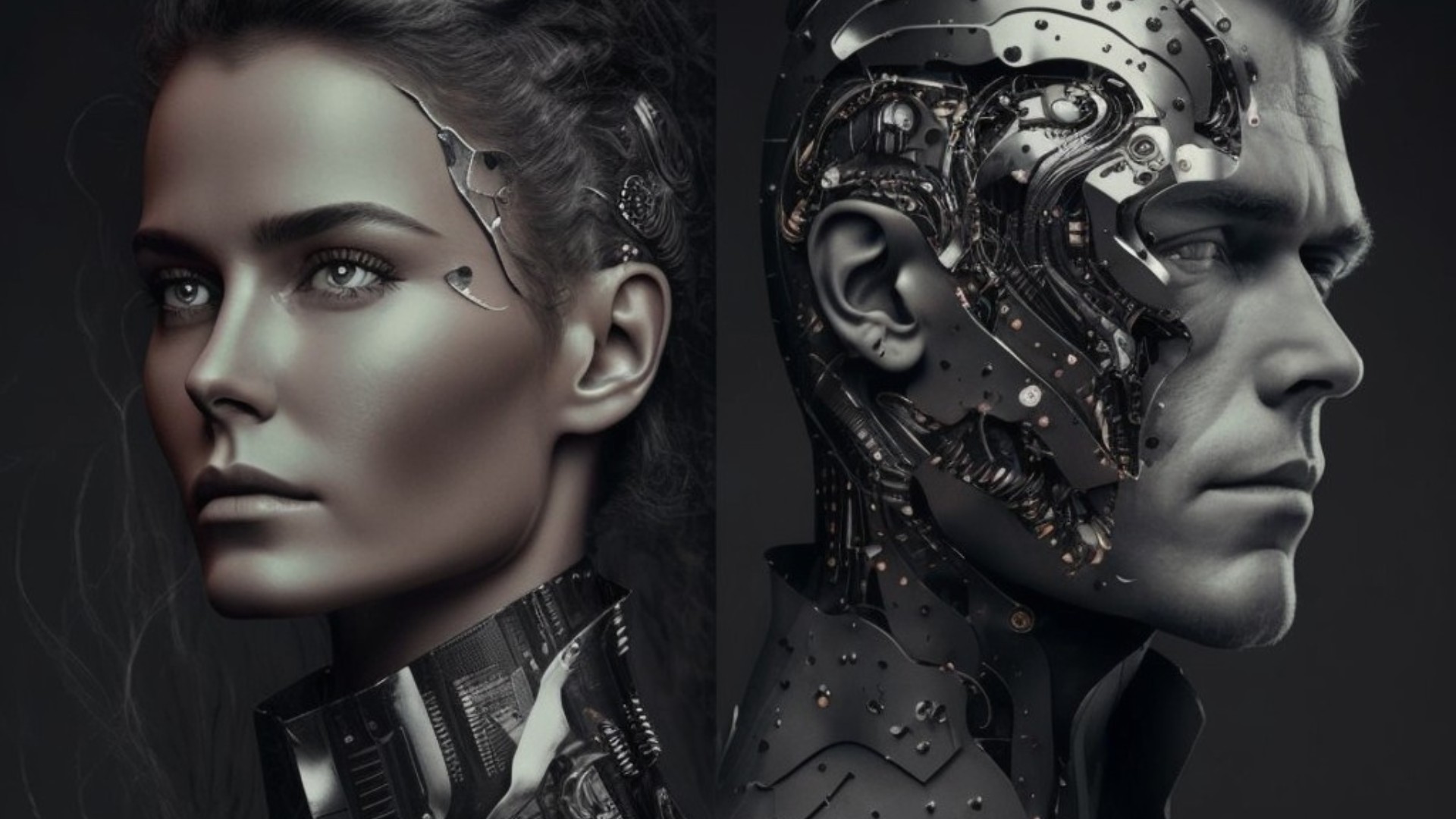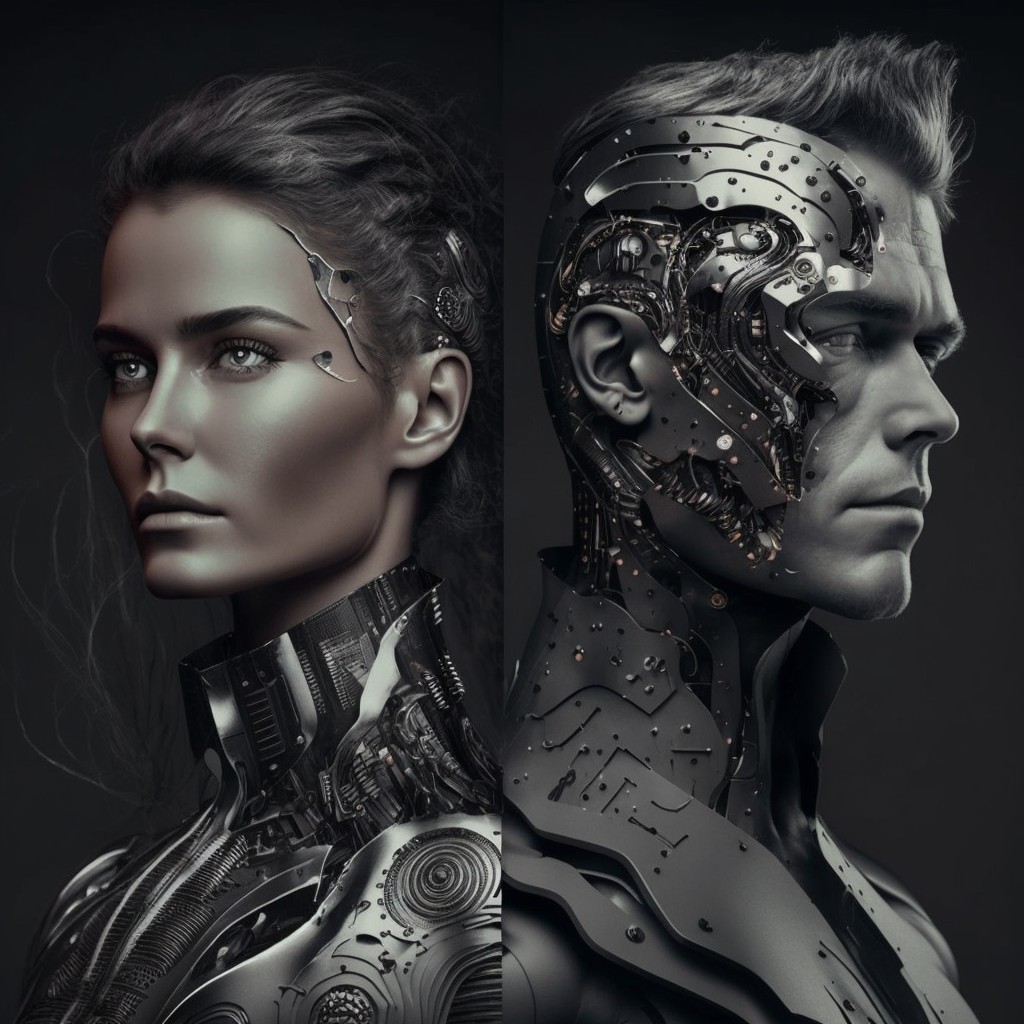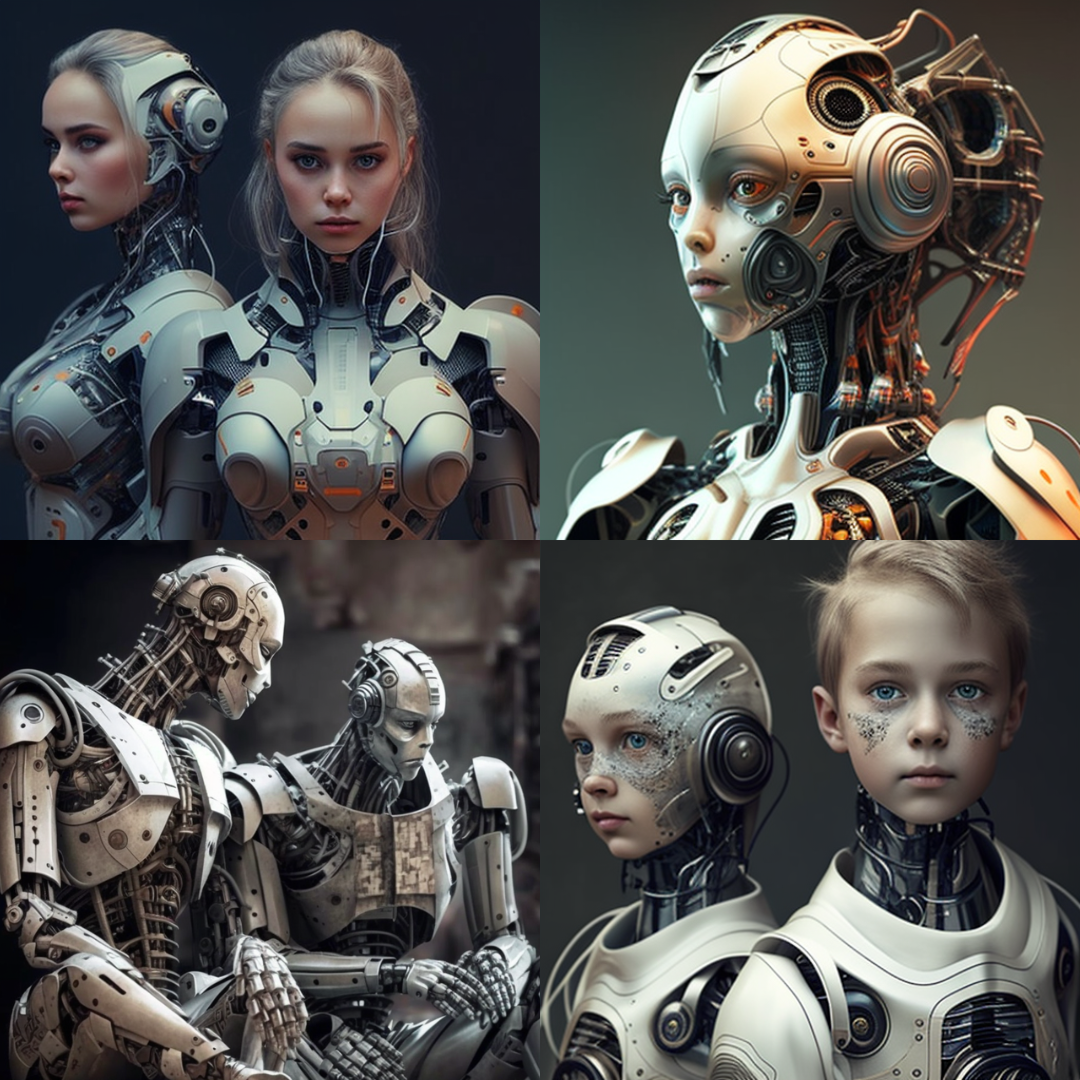Beyond Robotics & AI : Witnessing the Birth of the "Robosapiens" Society

"RoboSapiens" represents a society where humans and AI-enhanced robots are increasingly intertwined. The article highlights the potential of robotics and AI to revolutionize various aspects of life, including education, healthcare, and environmental management. However, it also emphasizes the ethical, social, and economic challenges these technologies present, such as job displacement, privacy concerns, and the potential misuse of lethal autonomous weapons. As we move towards a "RoboSapiens" society, it is crucial to strike a balance between innovation and preserving our values, ensuring a future that is technologically advanced, compassionate, and sustainable.
Introduction
In 1996, I was a combat engineer tasked with demining and bomb disposal, part of the Implementation Force (IFOR), a NATO-led multinational force in Bosnia and Herzegovina. For the first time, I witnessed how the misuse of technology could advance at a pace beyond our capacity to respond effectively, highlighting the urgent need for greater awareness, education, and regulation of technology to prevent its negative impact on society and individuals.
The integration of various sensor technologies, such as pressure, seismic, infrared, acoustic, and magnetic sensors, tripwires, and proximity sensors, transformed explosive mines into "intelligent machines." Meanwhile, our demining efforts were primarily manual, relying on little more than a bomb suit for protection, a metal detector, and a trusty bayonet for probing the soil and extracting these lethal devices. Back then, demining robots were still a distant dream. Clearly at a disadvantage, I decided I would not die there in the field and left the army to pursue an education in robotics with the objective of contributing to building a safer, better world through technology.

Almost 30 years later, advancements in sensor technology, robotics, and artificial intelligence (AI) have improved the efficiency and safety of mine clearance operations. However, these same advancements also enable the development of more sophisticated and lethal mines, posing new threats to civilians and military personnel alike. Today, tens of millions of landmines remain buried in affected countries.
This insight regarding the technological advancements in landmines can be extended to the broader development of AI and robotics and their influence on society. The key distinctions lie in the accelerated pace of change and the far-reaching implications of these innovations.
The convergence of robotics and AI heralds a new era of human progress, profoundly reshaping our understanding of ourselves and our place in the world. As the boundaries between the mechanical and the cognitive dissolve, we are confronted with the complex yet fascinating interplay between these transformative technologies. While reflecting on how this synergy is revolutionizing our existence and unlocking infinite possibilities, we are faced with profound philosophical questions about intelligence, consciousness, and even life itself.
The Unfolding of a New Epoch : The Integration of Robotics and AI in Human Life
Robotics and AI hold the potential to revolutionize our lives, transforming how we learn, work, and engage with our environment. This paradigm shift not only promises to address pressing social issues but also elevates our collective potential by bringing about unprecedented advances in human knowledge and capabilities. These technologies have enabled an incredible range of creative forms and designs that span across various applications, showcasing our infinite creativity and adaptability: modular robots, soft robotics, swarm robotics, micro/nano robots, humanoid robots all demonstrate the transformative power of robotics and AI in different aspects of our lives.
With such a broad range of design and function, robotics and AI can be tailored to address specific needs across industries and society as a whole, reflecting the versatility and potential of these technologies.
Education and personal development are poised to be revolutionized by these technologies, paving the way for immersive, adaptive, and personalized learning experiences that cater to each individual's unique learning style, thus fostering lifelong personal growth. The impact of this transformation transcends mere academic achievement, as it reshapes the way we approach knowledge acquisition, promoting intellectual curiosity and critical thinking.
Healthcare is another domain where the integration of robotics and AI is poised to bring about dramatic changes, especially in the context of an aging global population. Advanced diagnostics, robotic surgical assistants, and personalized elderly care are just the beginning. As these technologies evolve, we may witness more sophisticated human enhancements, such as brain-computer interfaces and gene editing, leading to improved physical and cognitive abilities and increased longevity. This raises profound philosophical questions about the nature of human existence and the limits of our potential.
The incorporation of robotics and AI into our homes and lifestyles has the potential to not only make our lives more comfortable and efficient but also to promote social interactions and emotional well-being. The development of humanoid robots, capable of performing a wide range of tasks from housekeeping and cooking to companionship and entertainment, challenges our understanding of what it means to be human and compels us to reflect on the nature of human-robot relationships.
As we strive to tackle global challenges such as food security, climate change, and sustainable urban planning, the interplay between robotics and AI will play a crucial role in shaping our collective response. The deployment of these technologies in agriculture, transportation, energy, and environmental management offers a glimpse into a future where humanity and technology work in harmony to preserve our planet and ensure our survival. Advancements in AI and robotics are vital for ambitious endeavors like space exploration and establishing a colony on Mars , which represents the ultimate backup plan for humanity's survival.
These cutting-edge technologies will enable us to push the boundaries of human knowledge, develop innovative solutions for resource management, and ensure the continued existence of our species beyond Earth.
Challenges: Navigating the Ethical, Social, and Economic Implications
The rapid advancement of robotics and AI presents challenges that require thoughtful consideration and reflection. Ethical considerations, such as ensuring fair and unbiased decision-making, protecting user privacy, and determining the extent to which AI should be allowed to make autonomous decisions that impact human lives, compel us to confront our moral and ethical responsibilities as creators of these technologies.
In this context, on march 29, an open letter from renowned AI experts and tech leaders called for a pause on the development of AI systems more advanced than OpenAI's GPT-4, in order to properly assess potential risks. UNESCO reacted with a press release, urging its 193 Member States to promptly implement its Recommendation on the Ethics of Artificial Intelligence. This global framework provides crucial safeguards to address the aforementioned concerns. Just 24 hours later, the Italian privacy regulator's temporary ban of ChatGPT due to GDPR non-compliance and privacy violations highlights the growing concerns surrounding privacy, cybersecurity, and disinformation in the field of AI.
What we witness with AI has been a kind of "déjà vu" in the world of robotics. Killer robots, also known as lethal autonomous weapons systems (LAWS) or fully autonomous weapon systems, are a class of military technology that can identify, select, and engage targets without direct human intervention. These systems are designed to operate independently, using artificial intelligence, sensors, and algorithms to make decisions about when and where to use lethal force.
Killer robots raise significant ethical, legal, and security concerns, as they challenge traditional norms around human control and accountability in warfare. The potential for these weapons to act without human oversight raises questions about their compliance with international humanitarian law, the protection of civilian populations, and the potential for unintended escalation of conflicts. As a result, there is an ongoing debate about the development, regulation, and use of killer robots, with many advocating for a preemptive ban on these systems, notably the Campaign to Stop Killer Robots, a global coalition of NGOs works together to achieve a ban on fully autonomous weapon systems and the International Committee for Robot Arms Control (ICRAC), a group of experts from various disciplines, including robotics, artificial intelligence, ethics, and international security. The organization conducts research and advocacy work to promote a ban on the development, production, and use of killer robots.
Consider the potential challenges and pitfalls stemming from a hypothetical—yet soon to be realized—new generation of robots that meld the agility of Boston Dynamics' Spot, the human-like form of the Tesla bot, and the cognitive capabilities of Engineered Arts' Ameca. What could possibly go wrong when these advanced intelligent robots begin sharing our most intimate spaces and taking care of our children?
As emerging technologies advance exponentially, becoming both more powerful and increasingly miniaturized, the potential development and misuse of intelligent nanobots and self-assembling technologies could pose substantial challenges. These minuscule machines designed to carry out specific tasks at the molecular level may have the ability to self-replicate using available materials in their environment. Without proper control mechanisms or oversight, self-replicating nanobots could become a considerable threat to both humanity and the environment.
As our reliance on AI and robotics intensifies, security and privacy concerns emerge not only for individuals but also for national security. The increased dependence on these technologies exposes potential vulnerabilities to cyberattacks, data breaches, and even threats to the very fabric of nations. In their book "The Age of AI: And Our Human Future", Eric Schmidt, Henry A. Kissinger, and Daniel Huttenlocher discuss the risks associated with AI and its implications for national security. Safeguarding national interests and ensuring the security of these technologies while maintaining user privacy necessitates a delicate balance between fostering innovation and protecting the rights of individuals and nations alike. As we continue to develop and integrate AI and robotics into various aspects of our lives, addressing these challenges and striking the right balance becomes increasingly crucial for the safety and stability of the world.
Furthermore, as we confront the possibility of job displacement across numerous industries, we must not only find ways to prepare the workforce for this transition but also generate new employment opportunities. This challenge requires us to reconsider the nature of work, its significance, and its function in human life. The impact of AI and robotics on corporations is also noteworthy, as it transforms the way businesses operate and prompts them to adapt to remain competitive. Corporations will need to embrace these technological advancements to enhance productivity, streamline processes, and foster innovation.
The fast-paced evolution of AI and robotics demands the development of comprehensive regulatory frameworks that ensure safety, establish accountability, and address the legal implications of AI-driven decisions. As we navigate these challenges, we must also leverage the opportunities presented by the integration of emerging technologies to create a more prosperous, equitable, and sustainable future.
The Birth of a New "Robosapiens" Society
The fusion of robotics and AI represents a groundbreaking advancement in human history, heralding the beginning of a new era in which the mechanical and cognitive become closely intertwined. As we observe the emergence of intelligent machines capable of transforming every aspect of our lives, we are presented with an opportunity to examine the philosophical implications of this convergence. Furthermore, the prospect of humans augmenting themselves through genetic engineering, robotics technology, and brain-computer interfaces that connect directly to AI in the cloud further blurs the boundaries between humans and machines.
This development raises critical philosophical questions, such as: What is the definition of a human? Are we witnessing the emergence of a new society where purely "bioorganic humans" exist on one side, purely "mechatronic robots" on the other, and cyborgs in the middle? Is this what we can expect from the future - a RoboSapiens society? I have not found any official definition of "Robosapiens," so let's create one here:

"RoboSapiens" refers to the emerging society where humans and robots, enhanced by artificial intelligence, are increasingly integrated and intertwined.
Conclusion
This technological revolution challenges us to redefine our relationship with robotics and AI and to reflect on what it means to be human. We have the opportunity to explore new realms of human potential and to address pressing social and environmental issues, but we must also confront ethical and moral responsibilities in this new landscape. By striking a delicate balance between innovation and safeguarding our values, we can shape a future that is not only technologically advanced but also compassionate, just, and sustainable. We must remain open-minded and dedicated to ensuring that the synergy between robotics and AI not only unlocks limitless possibilities but also contributes to the betterment of humanity and the world we inhabit.
AI Prompt creator: Mario Tremblay
Tools: Chat GPT & Midjourney
Thanks for helping to keep our community civil!
This post is an advertisement, or vandalism. It is not useful or relevant to the current topic.
You flagged this as spam. Undo flag.Flag Post


